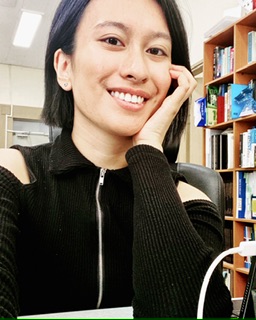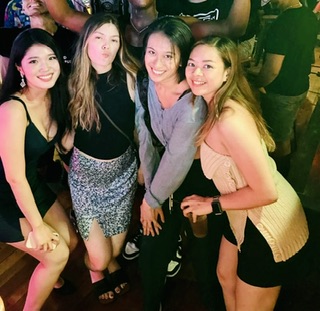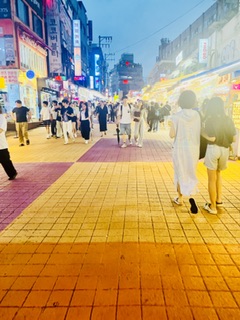“아름다운 까만 눈빛 더 빠져 깊이 / (넌 내게로, 난 네게료)” “Falling deeper into those beautiful, black eyes / (From you to me and me to you)”
I ended up liking the idea of sharing some Korean media in my posts, especially since I do also enjoy K-Pop quite a bit, so I found another song that remains on-theme with today’s post about the D.I.V.E. Model for critical incidents in other countries: “LOVE DIVE” by 아이브 (IVE).
As many who have attempted to live in a different country would likely agree, learning to live in a new culture is a lot like building a new relationship. In the context of my running metaphor of “cultural lenses,” the first phase may be similar to when you first become infatuated with a significant other in the “honeymoon phase” such that “love can be blind.” At these early stages, your lenses may initially be “clouded” by preconceived biases and romances about a country when you first arrive. In fact, those lenses may continue to “fog up” over and over again, even after you clear them the first time. Those few, humbling instances of clarity that “wipe away the fog” often involve what can be described as “critical incidents” in your host country.
In a previous blog entry, I know I have described some of my own critical incidents that occurred early on in my internship in Korea, and, as uncomfortable as they have been, they have not exactly gone away, but I think this is a good thing. In particular, I will describe one critical incident that was notably difficult incredibly but important as a part of my experience in Korea: since I am (sadly) coming to the end of my internship, I just did my final presentation in front of the other lab members yesterday, and I think this has become a big critical incident for me, simply due to the large wave of emotions that have overcome me since it ended. It has been a lot to process, and I am honestly still processing it, which is why, with the help of this blog, I will work on breaking it down according to the D.I.V.E. Model.
The first step of the D.I.V.E. Model is to (“D”) describe the critical incident. Basically, my entire internship has consisted of preparing for this final presentation by conducting my own literary review and reading through countless papers on my chosen topic of visual stereotypes. I have even been building up a hypothesis on a possible research question to tentatively propose during this presentation. Naturally, as an introverted person, I was terrified to do this, since presentations are nightmares incarnated for me. To make matters worse, two days before this presentation, I ended up losing my voice from overexertion, which made the whole situation even scarier. So, when the moment came, I felt completely unprepared, and I was super self-conscious the entire time because of my hoarse voice. Additionally, since this is a Korean lab, a majority of the discussion was held in Korean, but I think, as I had alluded to in my last post about critical incidents, the lab members felt somewhat bad for me, with my slower responses in Korean, so several of them switched to English. As with the other critical incidents where this happened, this did not really make me feel better and, rather, made me more self-conscious about the presentation. Though I have a better understanding of why they do it, I was still so flustered by this switch to English, that I struggled to respond to any further questions they asked at all. This was a particularly difficult struggle to deal with when it came to the hypothesis I had so carefully crafted, since I was at a loss for words when we ended up discussing it. Then, as the “cherry on top,” I accidentally disconnected from the Zoom meeting much earlier than expected, so, when one of the members texted me, asking me where I went, I felt completely mortified. Overall, though I had originally been excited to participate more in the lab via this presentation, I ended up completely overwhelmed and disappointed in my own performance.

The second step of the D.I.V.E. Model is to (“I”) interpret the critical incident. I think I somewhat covered this in my initial response to the presentation, but, to go more into depth on my evaluation of the whole scenario, I honestly had a lot of trouble going to sleep last night, because I felt completely ashamed. I was so embarrassed, because I interpreted this presentation as a failure in my final attempt to connect and integrate with the lab. After my stumbles through the presentation, I fully believed the lab members either, at best, pitied me or, at worst, were offended or found my presentation laughable. I evaluated this entire presentation as a bit of a letdown on my part, since I failed to show that I have adapted to life in the lab and instead believed that I had displayed sheer incompetence. I think this evaluation aligns with a lot of my initial cultural expectations, since, in the United States, though I still get anxious during presentations, I have never felt as though communication is an issue, since English has always been a strong suit of mine. It was therefore a shock to realize that I may not have been communicating my points as clearly as I had originally thought. Additionally, it aligns with some of my ingrained views as a daughter of immigrants that anything less than the best or perfection feels inadequate. Though this is not a belief that I think my parents actually hold, it has been one that I have held personally for a long time, since I have always wanted to make my parents proud, knowing how hard they had worked to come to America. Therefore, my interpretation really appears to be a clear display of my own cultural expectations on my competence and incompetence in the face of pressure.
The third step of the D.I.V.E. Model is to (“V”) verify the critical incident. Due to the nervousness and disappointment caused by my own high expectations, I was very emotional during the entire presentation and have been dealing with those feelings ever since. I felt worried, because I was scared that I had left a bad impression on my lab members and may never be welcome back if I eventually decided that I wanted to visit or to collaborate with them again in the future. I felt sad, because I thought that my inability to present in the way I had initially hoped for was a sign that I did not properly adapt to my lab setting and that I had failed myself. I felt angry with myself, because I kept coming up with all the ways I could have made that presentation even better, even though I have been putting in consistent work on it ever since I got to Korea. As I am walking through the D.I.V.E. Model, I am realizing that I have let my emotions drive all of my interpretations of what I have done ever since the beginning of this internship. While emotions do occasionally give useful information, I need to remember that I still have not actually verified what, exactly, the lab members think of me. I do not actually know if they think less of me now, and, even if they do, they must have at least seen me doing my best at all points in this internship — even to the point of presenting with a hoarse voice — and any negative impression is not a complete reflection of the entire nation’s opinion of me. Though I am still working through a lot of these complicated emotions, since some of them may also be related to the fact that I do not want the internship to end, I do feel at least a little bit of relief after working through the D.I.V.E. Model. Additionally, I hope to be able to build up the courage to verify this incident with one of the lab members or the lab director before I leave. I either want to know what I can work on if I truly did give a bad presentation, or I want to be able to reassure myself that any mistakes and stumbles do not necessarily lead to a change in a person’s whole impression of me.
The fourth step of the D.I.V.E. Model is to (“E”) evaluate the critical incident. Honestly speaking, since this occurred literally yesterday, I know my emotions may still produce a lot of bias in my evaluation, but I think that, at the very least, my evaluation of the entire situation has become slightly more positive. I see this as a learning experience and a period of growth, where I get to view my own limitations, but I also can see how far I have come in my Korean communication skills. Though I am not at the level of fluency I had hoped to be at, I have still improved markedly. In addition to improvements in my language skills, I even learned a lot about myself and gained a lot of ideas on what I want to do with my future by doing the lab work. Overall, though it was not a particularly fun presentation, I still think it was an important point in my journey in Korea, as it showed off my newfound strengths and weaknesses after spending a couple of months in a culture that is quite different from what I am used to.
After using the D.I.V.E. Model, I have found that I am able to look at extremely emotionally-charged experiences from a more rational perspective, and it allows me to grow from any experiences that may initially have seemed only negative in the moment. I do think that I will continue to keep this model in mind as I move forward in my life, especially if I do get to return to Korea once more, as I am hoping and dreaming. I believe it can really help me to take a step back from overwhelming experiences and view them with more clarity.
Returning to my initial metaphors, I believe the D.I.V.E. Model is one way to “clean” the lenses of your “cultural glasses,” especially when they are “fogged over” by powerful emotions. Additionally, it really aligns with the idea that entering into a new culture is a lot like entering into a new relationship. In relationships, it is important to look past the emotional aspects of it to see clearly whether or not it is reasonable to keep the relationship going. The D.I.V.E. Model provides a method by which you can more objectively evaluate various scenarios in such a relationship. If the problems and conflicts appear to be deeper than expected, then it may be worth reconsidering whether you truly want to continue to engage in this relationship. However, if you find that you are genuinely willing to put in the time and energy to work through these difficulties, then you may be able to better discern this through the D.IV.E. Model. I think that the D.I.V.E. Model is generally a useful tool in guiding a person’s interactions, both in interpersonal relationships and in intercultural relationships, and so, I will definitely be keeping it in my mind’s toolbox as I continue to meet more people and figure out where I would like to end up in the future.

Since this is one of my last few blog posts on this Korea adventure, I also want to note that I am just incredibly grateful that this internship has given me so many opportunities to learn and to grow, and, even through the difficult moments, I have been able to continue that growth into a better version of myself. I am genuinely so sad that I have to leave such a beautiful country and have been increasingly concerned with finding ways to come back, since I am aware it only gets harder the older I get, but, somehow, I know that, deep in my heart, regardless of where I end up, this internship will always be a foundational part of who I am as I continue forward in my life. I am also having faith that I will end up exactly where I am meant to be when I am meant to be there. I am very excited to see where my life is headed, both as I approach the end of this internship and as I enter into the unknowns of my future. I will forever be grateful for all the experiences, good and bad, that I have had during my time in Korea, and I hope that, for anyone reading these posts, they have inspired you to chase after your own adventures, wherever you may be, No matter how scary it may seem, I fully encourage you: if there is something you know, deep in your heart, that you want to do, just “hold your breath, and love dive” right in, since you never know what you may find!
Sincerely,
Sara Anne

P.S. Honestly speaking, as an introvert who loves quiet nights in, living in Hongdae, a city that is well known for its bustling nightlife, was initially intimidating, but I learned to fall in love with the beautiful aspects of its crazy nights, and this became my own, personal “love dive.” There is such a wide variety of people from all over the world that visit this area, and, in spite of the times that are hectic and chaotic, there is always a new experience around every corner, which I learned to appreciate as a unique part of Korean culture. Hongdae clearly reflects the “work hard, play hard” mindset that many young Koreans seem to hold dearly! I am definitely going to miss the incredible sights and sounds of this city — Hongdae really is one of those cities that never sleeps~ I just thought this was a fun example of diving into something that may not feel entirely comfortable at first but that may provide experiences that you could not find anywhere else or by just “dipping your toes in,” as they say…
